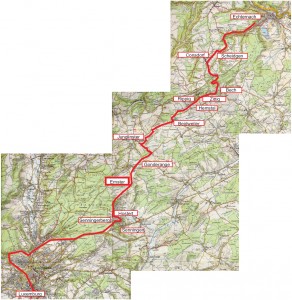 The cycle track PC2 Luxembourg-Echternach which crosses Ernster follows the ways of the “Charly”, a narrow way train (1 m) that linked up the city of Echternach with the capital.
The cycle track PC2 Luxembourg-Echternach which crosses Ernster follows the ways of the “Charly”, a narrow way train (1 m) that linked up the city of Echternach with the capital.
Before the building of the “Charly”, the communication between the villages and the city of Luxembourg was rather difficult. That is why the villagers took the hard way across the wood of Grünewald only for particular occasions, as for example for the pilgrimage of N.D. in Luxembourg.
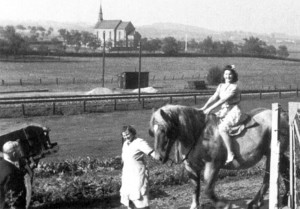 In 1892, foregrounds for the building of a train with narrow way linking up Luxembourg and Echternach were raised. In 1896, a project of a law for the building of a railway line was voted for 45,849 km in length. Construction could therefore begin in March, 1900. Its building cost 4.120.0000 francs, for that epoch a colossal sum, and which, at the beginning was worth it the nickname “Millioune Bunn”.
In 1892, foregrounds for the building of a train with narrow way linking up Luxembourg and Echternach were raised. In 1896, a project of a law for the building of a railway line was voted for 45,849 km in length. Construction could therefore begin in March, 1900. Its building cost 4.120.0000 francs, for that epoch a colossal sum, and which, at the beginning was worth it the nickname “Millioune Bunn”.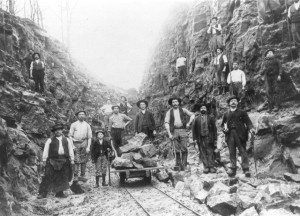 His final name of “Charly” comes from Charles Rischard, who at the time of unveiling was managing director of transport. In the municipality of Niederanven, only the villages of Senningerberg, Hostert and Ernster were on the line of the “Charly”.
His final name of “Charly” comes from Charles Rischard, who at the time of unveiling was managing director of transport. In the municipality of Niederanven, only the villages of Senningerberg, Hostert and Ernster were on the line of the “Charly”.
The villages of Senningerberg and Hostert had each a railway station, while in Ernster a simple panel marked the stopping of the train. 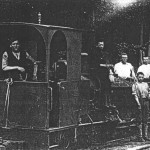 In the ages of crisis of the beginning of the 20th century, the construction work of “Charly” gave to the villagers job and subsistence. Even after the completion of the construction and the bringing into service of the line on April 20th, 1904, the train “Charly” gave to people jobs as employees or railway workers or allowed them to accept a job in the city. Besides that, the peasants had finally the possibility of going to Luxembourg city to sell their products on the market. Poor people could round off their monthly salary by planting fruit trees and by selling the harvest during winter months on the market in the city and the region was renowned for its arboriculture.
In the ages of crisis of the beginning of the 20th century, the construction work of “Charly” gave to the villagers job and subsistence. Even after the completion of the construction and the bringing into service of the line on April 20th, 1904, the train “Charly” gave to people jobs as employees or railway workers or allowed them to accept a job in the city. Besides that, the peasants had finally the possibility of going to Luxembourg city to sell their products on the market. Poor people could round off their monthly salary by planting fruit trees and by selling the harvest during winter months on the market in the city and the region was renowned for its arboriculture.
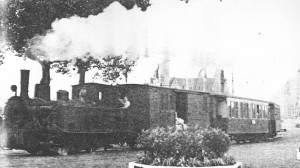 In spite of his not very comfortable wagons and his slowness (speed not exceeding 25 km/h) “Charly” could earn quickly the sympathy of all the people. In spite of initial development, this railway Romanticism declined from the middle of the 20th century. At the end of the forties the small train was replaced little by little with buses and on April 27th, 1957 “Charly” circulated for the last time towards Echternach. Shortly after, the rails were taken off. Today, the cycle track Luxembourg-Echternach follows mostly the ancient line of the “Charly”.
In spite of his not very comfortable wagons and his slowness (speed not exceeding 25 km/h) “Charly” could earn quickly the sympathy of all the people. In spite of initial development, this railway Romanticism declined from the middle of the 20th century. At the end of the forties the small train was replaced little by little with buses and on April 27th, 1957 “Charly” circulated for the last time towards Echternach. Shortly after, the rails were taken off. Today, the cycle track Luxembourg-Echternach follows mostly the ancient line of the “Charly”.
